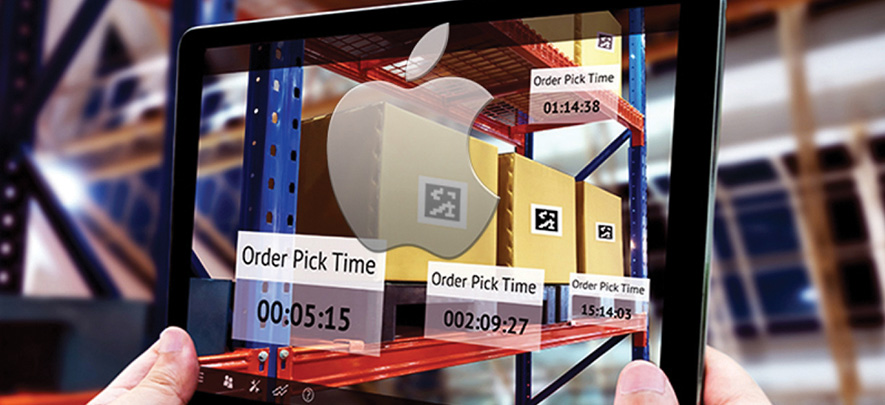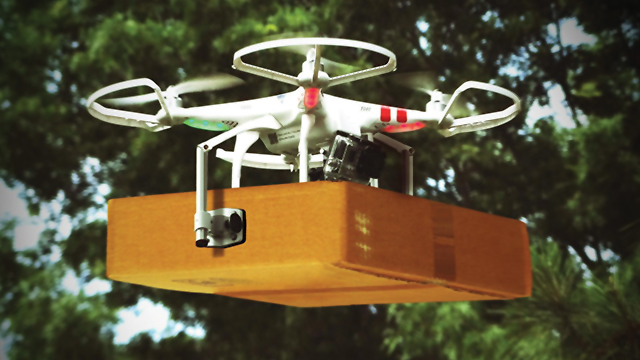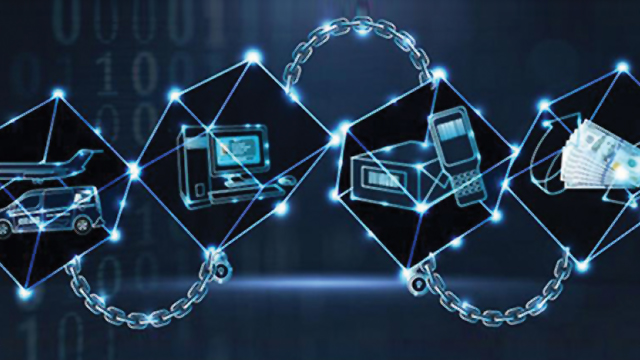Let the machines in

Retail
355 week ago — 12 min read
Summary: Digital transformation has revolutioned every industry, including the retail sector. A look at eight strategic technology trends that will impact retail supply chain. If leveraged correctly, these can provide a significant competitive advantage.
In this ‘experience economy’, the onus of fulfilling the ‘great experience across channels’ promise made to customers has squarely fallen on the shoulders of the humble supply chain. Realising this, businesses have focussed their attention on improving their supply chain performance. Innovators, analysts and experts are all experimenting with cutting-edge technologies to find supply chain use cases with the aim to save costs, increase efficiencies and ultimately help delight the end-consumer.
Let’s have a look at eight such strategic technology trends identified by leading research and advisory company Gartner that impact supply chains. If used right, these provide a significant competitive advantage.
1. Artificial Intelligence (AI)
AI carries great potential to revolutionise supply chain processes by automating decision making, reinventing business models and ecosystems, and enhancing customer experience. It is also being used for ‘picking and packing’ operations, as well as in transport, across fleets of trucks and ships. Amazon and Walmart are using AI for a better understanding of what their consumers want based on their habits, allowing for more efficient marketing and inventory handling.
As exciting as these possibilities seem, current AI solutions in supply chains lack decision-making or prescriptive abilities, which are critical for its widespread adoption. If achieved, it will free up resources for higher-order jobs like capacity planning and strategic network design.
2. Advanced Analytics
Advanced analytics involves using smart technologies to predict future scenarios and prescribe actions, enabling companies to proactively take advantage of forthcoming opportunities and mitigate impending adverse events. It can improve decision making in functional areas like supply chain planning, sourcing, and logistics and transportation, improving end-to-end supply chain performance. Advanced analytics being used to perform processes that previously relied on human judgment could have a significant impact on future demands for supply chain talent. According to a study on the subject by The Hackett Group, forecast accuracy, demand patterns, product tracking traceability, transportation performance and analysis of product returns are also use cases where analytics can close knowledge gaps. No wonder, 66% of supply chain leaders in the study consider advanced supply chain analytics to be critically important to their operations in the next two to three years. In another survey by Bloomberg, 73% of executives said that supply chain analytics tools are important to meet their goals.
3. Internet of Things (IoT)
According to digital transformation expert Daniel Newman, IoT is set to revolutionise the supply chain with both operational efficiencies and revenue opportunities. “In today’s market, supply chain isn’t just a way to keep track of your product. It’s a way to gain an edge on your competitors and even build your own brand,” he writes in a Forbes article.
When it comes to operational efficiencies, IoT offers advanced asset tracking with tighter quality control, accurate forecasting and inventory, connected fleets and preventative maintenance. IoT can also help vendor relations—Data through asset tracking can be used to recognise sub-par vendor relationships that may be costing money. According to IBM, up to 65% of the value of a company’s products or services is derived from its suppliers. With IoT, it will be easy to pay closer attention to how vendors handle supplies.
Other potentially impactful supply chain use cases include improved asset utilisation and higher uptime through remote monitoring. Furthermore, it can help analyse massive data generated by the connected devices in real-time to reduce losses and inefficiencies.
IoT allows businesses to form tighter connections with customers, and market to them in new and better ways, helping increase revenue.
4. Intelligent Vehicles
These include autonomous mobile robots and autonomous vehicles. Self-driving vehicles make use of integrated sensors to navigate and can be used for logistics operations such as pallet moving in warehouses and last-mile delivery solutions.
Drones or unmanned aerial vehicles too have business to consumer applications. For instance, in the US, Amazon has ventured into commercial use of drones and unmanned aerial vehicles with its Amazon Prime Air model.

Last year, Domino’s Pizza partnered with Starship Technologies to pilot delivery using autonomous robots in major European cities.
According to Gartner, intelligent technologies will help organisations replace or deploy their workers in more value-adding activities creating high—even transformational— business benefits.
5. Conversational Systems
Systems such as Virtual Personal Assistants (VPAs) and chatbots are ushering in a new era in retail known as conversational commerce, where users ‘converse with’ these systems (either by voice or text) to make buying decisions and resolve issues. These intelligent systems can handle discovery questions and offer solutions without human intervention. They can also enable transactions, handle payments, ensure delivery and provide customer service. Order procurement is one area where chatbots show promise. They can search for suppliers and carry out low value order placement.
6. Robotic Process Automation
Robotic process automation (RPA) allows supply chain leaders to cut costs, eliminate keying errors, speed up processes and link applications. For example, an organisation may want to work with structured data to automate an existing manual task or process with minimal process re-engineering, or to avoid major system integration projects, or specific new major application deployments.

According to a Capgemini report, high tech manufacturing, healthcare and the chemical industry are embarking on RPA for process automation, particularly in areas that are high-volume, repetitive and rule-based, such as orders and claim processing, invoice creation, and reports and dashboards. RPA software bots can monitor inventory, generate notifications and reorder products when levels go below a set threshold. It frees up time and resources to work on high-value exception-based requirements. RPA is quite effective in lowering service costs by improving productivity by 40–60%, although results can vary in relation to the nature of the processes involved and their maturity levels.
7. Immersive Technologies
Immersive technologies such as virtual reality (VR) and augmented reality (AR) allow supply chain businesses to enhance the digital experience of employees and customers. According to Craig Rawlings, Head of Supply Chain Consulting, KPMG in Singapore, VR and AR innovations for supply chain are focused on cost and efficiency.
Vision picking using AR smart glasses is the most popular application of AR, which facilitates faster, hands– free operation of warehousing tasks like picking, sorting, and assembly. In the US and Europe, smart glasses are being increasingly used in warehousing operation.
Organisations, such as DHL, drive warehouse efficiencies through scene recognition during the order picking process. Vision picking enables hands free order picking at a faster pace with reduced errors. DHL Logistics Trends Radar 2016 reported an increase of 25% in operational efficiency after introducing smart glasses for the picking task alone in DHL’s warehouses in Netherlands.
Immersive technologies are also being used for enhanced repair and maintenance, better purchasing choices for customers, product or store layout visualization, and planning. Gartner estimates VR will reach mainstream adoption in the next two to five years, with AR going mainstream in the next five to 10 years.
8. Blockchain
Blockchain offers a shared ledger that is updated and validated in real-time with each network participant. It enables equal visibility of activities and reveals where an asset is at any point in time, who owns it, and what condition it is in, bringing in traceability and transparency.

According to Gartner, certain highly decentralised supply chain management functions, such as smart contracts or traceability and authentication are prime candidates for blockchain.
A third potential usage for Blockchain technology, as per Capgemini, lies in its capabilities for validating data: Blockchain allows one to follow and track the ‘journey’ of data, including a valid timestamp. This is useful in a wide variety of processes such as: Exchange of confidential business documents, transfer of shipping documents, or orders and order confirmations. In combination with Smart Contracts, the potential is even larger; automation of order books is just one of many opportunities.
Multiple business use cases are yet to be proven, but some early pilot projects have emerged that are experimenting with the potential of blockchain for supply chain. For example, blockchain is being used to track the movement of diamonds from mining to retail stores by developing a digital record that includes unique attributes, including color, carat and certificate number etched on them by laser.
Digital companies are experimenting with blockchain to help solve practical supply chain challenges like tracking, transparency and trust, record-keeping, damage from natural disasters, unforeseen shortages, spikes in demand and a litany of smaller issues.
A word of advice
With the pressure to automate and digitalise, companies tend to deploy technologies randomly. This may generate point benefits, not enterprise-wide added value. The key is to make automation technologies part of a comprehensive and strategic approach.
“Supply chain leaders must assess their company’s risk culture to determine their readiness to explore and adopt emerging offerings,” advises Christian Titze, research director at Gartner. “If in doubt, consider piloting small projects to determine whether the potential benefit of the technology trend is worth the risk and required investment in new skills, capabilities and services.”
Going forward, companies that harness the trends to achieve agility, scalability, responsiveness and transparency, will gain huge a competitive advantage by creating tangible value in the areas of customer service, efficiency and costs.
Article source: STOrai Magazine
Disclaimer: The views and opinions expressed in this article are those of the author and do not necessarily reflect the views, official policy or position of GlobalLinker.
View Shiv 's profile
Most read this week













Comments
Share this content
Please login or Register to join the discussion